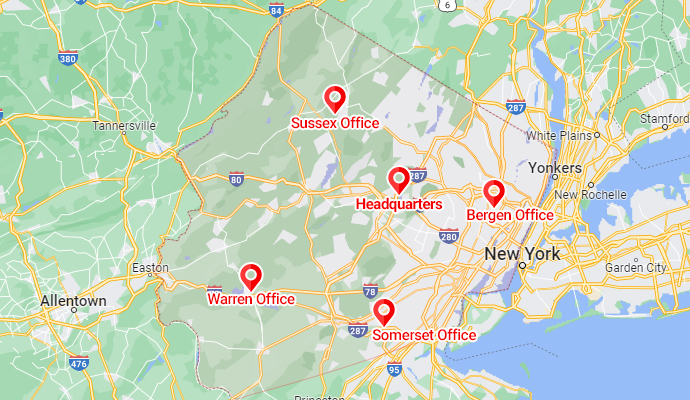How to Avoid Ice Damming & Water Damage from Snow Accumulation
What Is Ice Damming?

As snow accumulates on your roof, the heat from inside your home can melt the snow. When this snow melts, the water it becomes flows to the edge of your roof to your eaves. Since the eaves overhang your roof and are not heated parts of your home, this water begins to refreeze. When this happens, an “ice ridge” forms and keeps getting bigger.
As more snow falls, warmer temperatures or rain will make this new snow melt. That melted snow water is now trapped behind the “ice ridge,” and ends up forming an “ice dam.” Ice damming can cause the trapped water to pool under the shingles of your roof and leak into your house, which can cause water damage.
Trying to remove an ice dam is tough work. The best way to deal with ice damming is to prevent them from forming in the first place. The best ways to prevent the forming of ice dams are:
- Insulation in the ceiling
- Increase ventilation
- Supply heat
- Clean, clean, clean
- Maintain your roof
Insulation in the Ceiling
Quality insulation is imperative when working to reduce the formation of ice dams. When you properly insulate your ceilings, below the attic, you are keeping the heat inside, instead of on your roof. Insulation that is blown in versus the hand-placed batts is better because it leaves fewer gaps and keeps the heat inside. Most building codes require 12-14 inches of insulation, but if you’ve had ice damming happen in the past, you may want to increase this amount. Proper insulation also helps your home be more energy efficient
Increase Ventilation
Even with added insulation in your attic, large amounts of heat can still creep into your attic and consequently warm the temperature of your roof. Installing proper ventilation under the roof deck can allow the trapped heated air to escape before it makes your roof warmer. By ventilating the eaves and ridge of your roof, you’ll have cooler air circulating under the entire roof. Use a single ridge vent combined with continuous soffit vents to maintain a constant flow of circulating air.
Supply Heat
By maintaining a warmer temperature along the gutters, roof’s edge, and downspouts, you may prevent ice dams from forming.
Install a self-regulating heat cable. Self-regulating heating cables work by producing heat, based on the temperature in each segment of the cable. These cables produce only enough heat needed for each area, making them energy efficient. They adjust to freezing temperatures or when snow is detected and only use electricity during these times. They are also heavy-duty and durable and can be cut to the needed length.
Clean, Clean, Clean
In the warmer months, when you’re preparing for winter, make sure to keep the roof drains, downspouts, and gutters cleaned out. Remove debris, such as small tree branches, leaves, and other materials. By keeping these areas clean you will reduce the risk of water getting trapped, pooling, and freezing, all the beginnings of ice dam formations.
Along these same lines, once winter hits and the snowstorms begin, you can use a roof rake to remove large amounts of roof snow. Always be sure to stand only on the ground, and not on a ladder, when using a roof rake. You can also hire a roof snow removal company for the task.
Maintain Your Roof
During the dryer months, make sure to inspect your roof for any evidence of where water could have been sitting for long periods. This inspection should also include making sure that the drain spouts are clean of any debris and are in good shape. Water from melted snow will have nowhere to go if the draining areas of your roof are not working.
Homeowners every year have to deal with ice damming and the damage it causes. Both interior and exterior water damage can be costly and devastating to your home. Choose PDQ Restoration and have confidence that we can help you limit the long-term effects of ice damming and water damage.

















